Beautiful glossy deep purple eggplant has a unique taste and texture. It is full of health benefits and is tasty too. The first time I saw this amazing superfood was at a European market shop decades ago. It was so beautiful that I bought one and put it on the counter for a couple of days to enjoy its beauty before finding a recipe.
“Gleaming skin; a plump elongated shape: the eggplant is a vegetable you’d want to caress with your eyes and fingers, even if you didn’t know its luscious flavor.” – Roger Verge
When I lived in England it was called aubergine, not eggplant. In fact, it is most commonly called aubergine in Australia, France, and England.
The beautiful eggplant is loved for its vibrant purple color and unique pleasant bitter taste. It is also full of nutrition and health benefits.
7 Health Benefits of Eggplant
Eggplants contain a rare, unique antioxidant called nasunin which is exceptionally beneficial. It is a powerful antioxidant neutralizing free radicals which can cause damage to our living cells and tissues. Nasunin gives the eggplant it’s dark purple coloring which protects it from environmental damage particularly from the sun. Nasunin is also found in deep colored vegetables and fruits such as the red turnip and red cabbage. The purple skin of the eggplant has the highest amount of nasunin making it very beneficial.
Increases Iron Absorption
Iron chelator helping iron to be easily absorbed according to studies.
Protects DNA and Cell Membranes from Damage
Nasunin protects the fat layer of the cell membrane which keeps it together and stops a change or death of the cell.
Fights Inflammation
Nasunin fights inflammation and oxidative stress according to studies. It also helps remove poisonous metals (mercury, arsenic, and lead) out of the body.
Increases Nutrient Use and Removal of Waste
The antioxidant, nasunin helps the cells in our body use the nutrients from the food we eat and remove waste. Removal of wastes is important because when there is a buildup of toxins in our body it can lead to the development of many diseases such as heart disease, cancer, and arthritis.
Keeps the Brain Healthy
Nasunin helps the brain’s lipid cell membranes which keeps the brain healthy.
Note: Iron is a vital nutrient (for oxygen transport and immune function) but too much iron is not good. Too much iron increases free radical production which can cause an increase in heart disease and cancer. Women menstruating lose iron every month so they are not likely to have too much iron. Postmenopausal women and men can easily accumulate too much by chelating iron.
Excellent for Type 2 Diabetics
The Laboratory of Food Biotechnology, University of Massachusetts found it to help control glucose absorption and reduce associated hypertension.
Helps Blood Pressure
Eggplants contain ACE (angiotensin converting enzyme); prescription blood pressure drugs block ACE.
Note:
They are part of the nightshade family, which includes potatoes, tomatoes, and bell peppers. For those who are sensitive to nightshades, they could trigger inflammation in the body and contribute to arthritis. There are no scientific studies to confirm this, but many health professionals have made the observation that some are sensitive to nightshade produce. It has been suggested that this sensitivity to nightshades is a unique sensitivity to solanine.
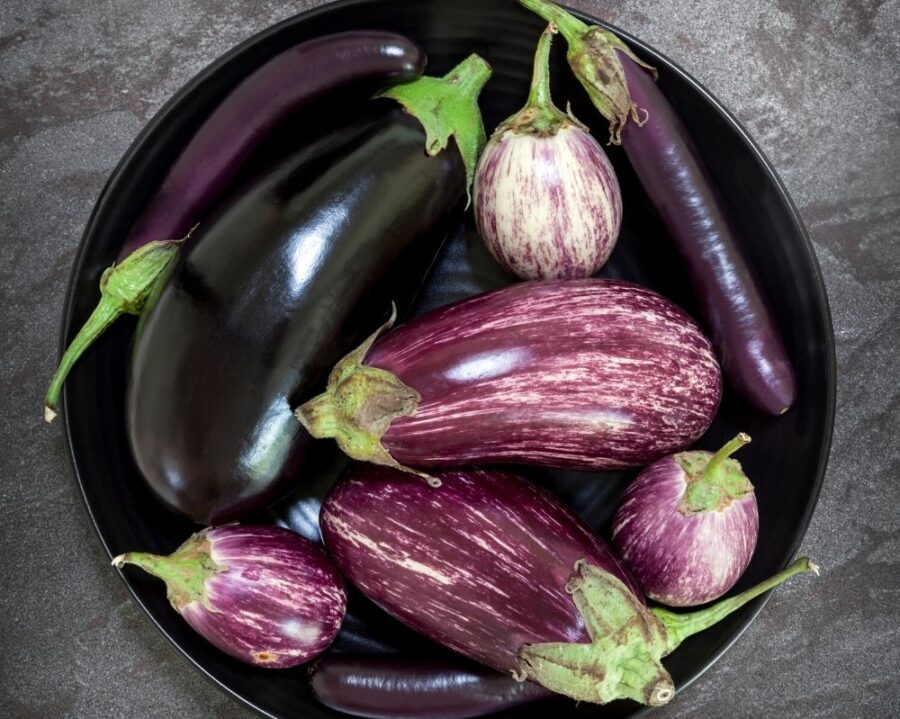
Trivia
- Around the world Eggplant is known by different names, it is most commonly referred to as aubergine in Australia, France, and England.
- A woman in China must have at least 12 eggplant recipes before her wedding day as it is part of her “bride price.”
- The white-skinned variety was originally given the name eggplant. The name stuck and has been applied to all varieties.
- People in parts of Europe thought that eating eggplant caused madness, leprosy, cancer, and bad breath.
- There are about 7 types of eggplant harvested and available in the US which includes the most common large oval eggplant and small Japanese eggplant.
- It is often used as a meat substitute in vegan and vegetarian cuisines because of its texture and bulk.
- More than 3/4 of world eggplant production comes from Asia.
- Thomas Jefferson is credited as having brought the first eggplants to the U.S.
- Eggplant is on the list of the “Clean 15” vegetables, which means they are less likely to be sprayed with a large number of pesticides.
- They are part of the nightshade family of vegetables.
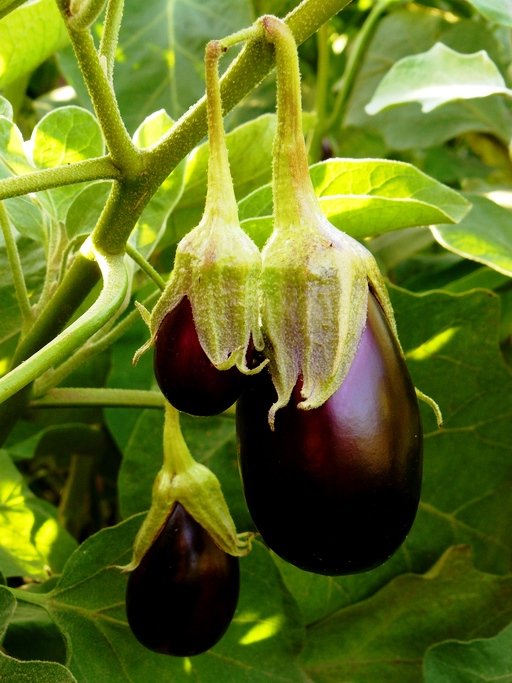
History
- Eggplant’s ancient ancestors grew wild in India.
- They were first cultivated in the 5th century B.C. in China.
- Before the Middle Ages, it was introduced to Africa and then Italy.
- By the 14th century, you could find them all through Europe and the Middle East.
- Later they arrived in North America by European Explorers.
Eggplant Nutrition
It is full of antioxidants, special phytonutrients such as nasunin, and many vitamins and minerals. Also, all of this comes with only 35 calories per cup. Learn more about Eggplant nutrient details.
To receive all these wonderful nutrients, it has been found that cooked eggplant is better than raw eggplant.
How to Select the Best Eggplant
They are at best when they are in season from August through October but you can get them all year long. Make sure that it is heavy and firm a skin of bright color that is smooth and shiny. They are best with no bruises and discoloration with stems on the ends bright green. Press the skin with your thumb and it will spring back if it is ripe with no depression remaining. For sure it should not be waxed.
How to Store Eggplant
They are very delicate as they are sensitive to both cold and heat. It is best to store in the refrigerator uncut because once the skin has been pierced the inner flesh will spoil.
An eggplant wrapped in a plastic film will not let it breathe so remove it. Put unwashed eggplant into a plastic bag and store it in the refrigerator’s crisper.
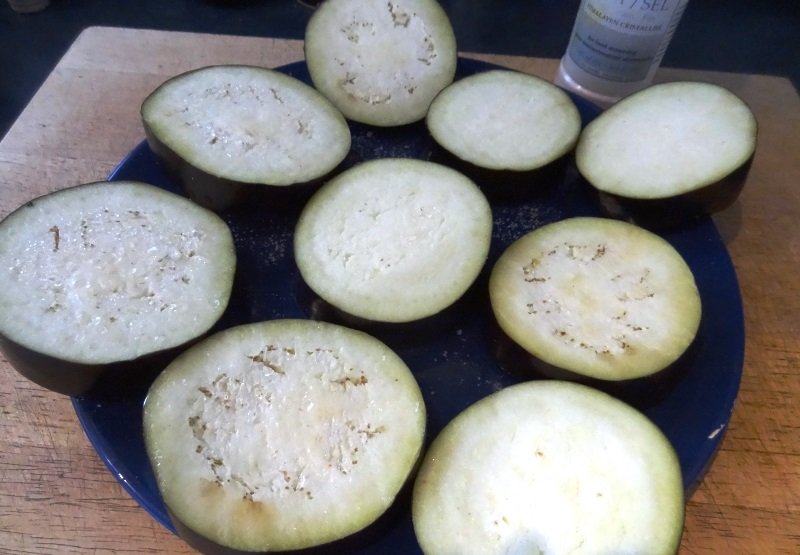
Tips for Preparing Eggplant
First, wash it and cut off the ends using a stainless steel knife as a carbon knife with cause it to turn black destroying phytonutrients.
Leave the skin on as that is where most of the health benefits are except the large white ones that usually have inedible tough skins.
The bitter taste which is natural can be reduced by sprinkling it with salt and letting it sit for about 30 – 40 minutes. This will pull out some water making it less absorbent oil used in cooking. Rinse it and now it can be cooked. Now they can be fried, sautéed, baked, or steamed.
“When I was alone, I lived on eggplant, the stove top cook’s strongest ally. I fried it and stewed it, and ate it crisp and sludgy, hot and cold. It was cheap and filling and was delicious in all manner of strange combinations. If any was left over, I ate it cold the next day on bread.” ~ Laurie Colwin
Two Delicious Eggplant Recipes
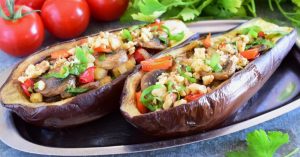
Delicious Stuffed Eggplant for Your Dinner – This stuffed eggplant makes a delicious savory main course for dinner as it is so filling and it is super easy to make.
Vegan Curry Recipe That is Delicious and Easy to Make – This vegan curry recipe is delicious and so easy to make! It is full of nutritious nutritious superfood vegetables and spices that your body loves. Also, if you are like me and don’t like hot spicy food, you can make this curry without it being hot.
Try these tasty recipes:
Sweet Bell Peppers Stuffed with Wild Rice – This sweet bell peppers recipe with wild rice is a favourite of mine. It’s yummy, beautiful and nutritious!
Creamy Chickpea and Rice Pie– This chickpea pie is a very tasty meal which does take a little extra time to prepare but it is worth it.
100+ Superfoods
Learn more about some of the healthiest vegetarian foods you will always want to have in your pantry or growing on your deck.
READ: Superfoods – Over 100 of the Healthiest Foods You Should Have in Your Diet and learn more about the variety of Superfoods we think you should have in your diet.

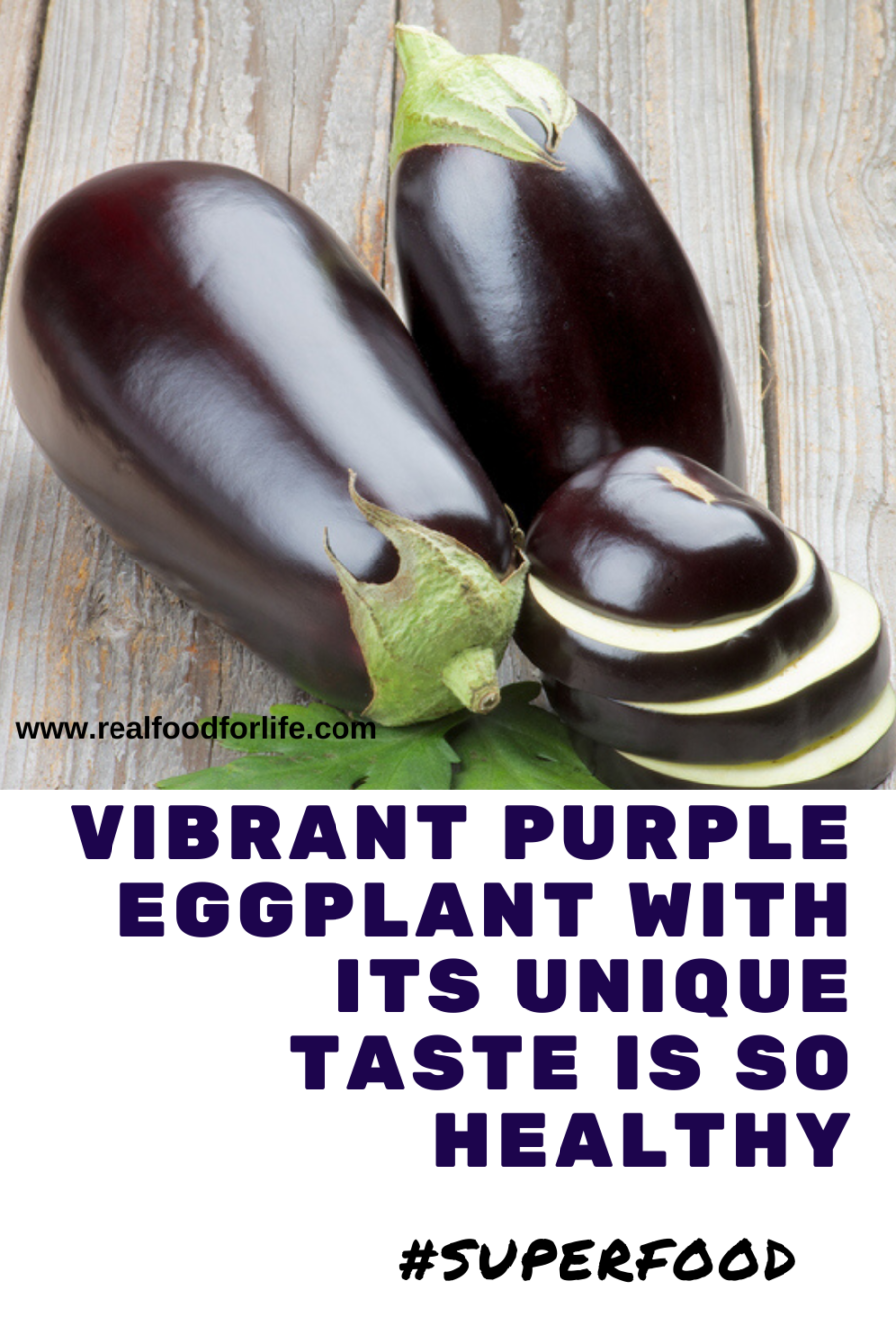

I’m a big fan of eggplant. I always want to put it on my menu as much as possible and it’s so great to hear this has so many benefits. Wow, this is so incredible! Great job Diana!
Hi Diana.
Eggplant is a favorite here and I esp love a dish made with roasted eggplant. Interestingly, it has another variation which is prepared in Africa.
You need two large eggplants. Ideally you should look for black ones as they have less seeds. Seeds in eggplant make them taste bitter, esp. when roasted.
Eggplants -2
Spring onions – 4 chopped along with the greens
salt
cumin powder
coriander powder
turmeric powder
red chilli powder or 2 finely chopped green chillies
Adjust spice quantity and can vary from 1/2 teaspoon to 1 teaspoon depending on your tolerance for spices.
oil
Cumin seed 1 tsp
Asafoetida 1/4 tsp
Take a knife and make cross sections on the eggplant skin. Roast them on open flame until skin is charred. Cool and remove the skin.
Slice and mash the eggplant till pulpy,
In a steel or non-stick wok, heat a tablespoon oil. Add cumin seeds and asafoetida as tempering.
Add the roasted eggplant.
Mix it with oil.
Add spring onion and mix.
Add spices and continue mixing it with ladle till colour turns to brown.
Serve warm.
We usually eat it pearlmillet hand bread and split udad dal.
Another variation is the baked version where you add yoghurt and peanut powder and salt. With no spices. That is absolutely delicious as well.